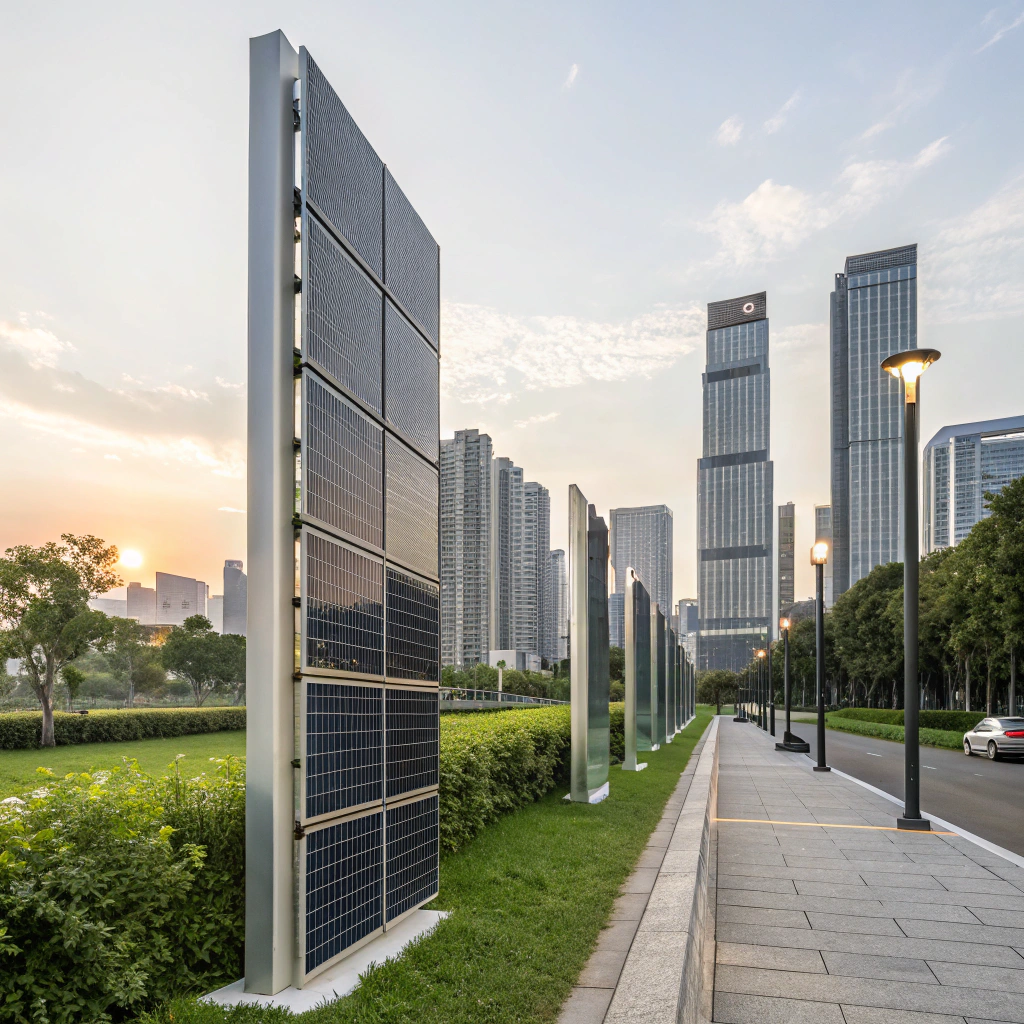Focus on the "Space Revolution" – How Vertical PV Systems Solve Installation Scenario Challenges?
•
Focus on the "Space Revolution" – How Vertical PV Systems Solve Installation Scenario Challenges?
Solar energy is booming, but space constraints[^1] are holding it back. Are vertical PV systems the breakthrough we need?
Vertical PV systems[^2] maximize space efficiency by utilizing building facades[^3], fences, and high-latitude terrains, offering a revolutionary solution to traditional solar installation challenges while maintaining high energy output.

The solar industry is at a crossroads. With urban spaces shrinking and land costs rising, the traditional rooftop solar model is hitting its limits. But what if we could turn every vertical surface into a power generator? Vertical PV systems[^2] are rewriting the rules of solar installation, and here’s why you should care.
Bid Farewell to "Roof Dependence"! Innovative Applications of Vertical PV Systems on Building Facades and Fences
Tired of limited rooftop space dictating your solar potential? Vertical PV systems[^2] are changing the game.
Vertical PV systems[^2] eliminate roof dependence by transforming building facades[^3] and fences into efficient solar generators, enabling energy production[^4] in space-constrained urban environments without compromising aesthetics or functionality.
The Urban Solar Revolution
Cities are solar goldmines[^5] waiting to be tapped. Traditional rooftop systems often fall short due to:
- Limited roof area
- Shading from adjacent buildings
- Structural load constraints
Vertical PV systems[^2] solve these problems by:
- Facade Integration: Modern building-integrated photovoltaics (BIPV) seamlessly blend with architecture.
- Fence Solutions: Perimeter fencing becomes dual-purpose infrastructure.
- Aesthetic Flexibility: Customizable colors and transparency levels maintain design integrity.
| Application | Energy Yield (kWh/m²/year) | Space Saving |
|---|---|---|
| Facade PV | 80-120 | 100% |
| Fence PV | 60-90 | 90% |
Technical Considerations
- Bifacial Advantage: Vertical systems often use bifacial modules[^6] to capture reflected light
- Wind Load Design: Requires specialized engineering for structural integrity
- Maintenance Access: Integrated cleaning systems become crucial
The future of urban solar isn't above us - it's all around us.
Bifacial Power Generation + Vertical Layout: Key Technologies for Improving PV Efficiency in High-Latitude Regions
Struggling with low solar angles in northern climates? Vertical bifacial systems might be your perfect match.
Vertical bifacial PV systems excel in high-latitude regions[^7] by optimizing light capture from low-angle sun and snow reflection, delivering up to 30% higher winter yields than traditional tilted arrays.
Why Vertical Works in the North
-
Snow Advantage:
- Vertical panels stay snow-free
- Snow reflection boosts bifacial gain
- Winter production increases by 40-60%
-
Sun Angle Optimization:
- Captures morning and evening sun
- Avoids summer overheating
- More consistent annual output
-
Land Use Benefits:
- Compatible with agricultural use
- Reduced ground coverage ratio
- Dual-use potential
| Location | Traditional Tilt Yield | Vertical Bifacial Yield | Improvement |
|---|---|---|---|
| Oslo | 900 kWh/kWp | 1,100 kWh/kWp | +22% |
| Anchorage | 750 kWh/kWp | 1,050 kWh/kWp | +40% |
Implementation Tips
- Optimal east-west orientation
- 1.5-2m panel height for snow clearance
- Reflective ground surfaces enhance performance
New Approach to Agri-PV: How Vertical Modules Achieve "Power Generation Without Shading, Cultivation Without Land Occupation"
Farmland or solar farm? With vertical PV, you don't have to choose.
Vertical agri-PV[^8] systems enable simultaneous solar generation and crop production by minimizing shading while maximizing land use efficiency, creating synergistic benefits for both energy and agriculture.
The Agri-PV Revolution
Traditional solar farms compete with agriculture for land. Vertical systems solve this through:
-
Space Optimization:
- Rows of vertical panels
- 90%+ land remains available for crops
- No significant yield reduction
-
Microclimate Benefits:
- Wind protection for crops
- Reduced water evaporation
- Frost protection
-
Crop-Specific Designs:
- Adjustable panel spacing
- Height variations
- Selective light transmission
| Crop Type | Yield Impact | Energy Output |
|---|---|---|
| Wheat | ±0% | 500 kWh/m/year |
| Vineyards | +5% | 400 kWh/m/year |
| Berries | -2% | 600 kWh/m/year |
Economic Advantages
- Dual income streams
- Higher land productivity
- Eligibility for agricultural subsidies
- Reduced irrigation costs
Conclusion
Vertical PV systems[^2] are transforming solar energy by unlocking unused spaces, optimizing high-latitude performance, and enabling agricultural coexistence - the space revolution is here.
[^1]: Learn how vertical PV systems overcome urban space limitations for solar energy generation.
[^2]: Explore how Vertical PV systems maximize space efficiency and energy output, revolutionizing solar energy solutions.
[^3]: Learn about innovative applications of solar technology on building facades, enhancing urban energy solutions.




